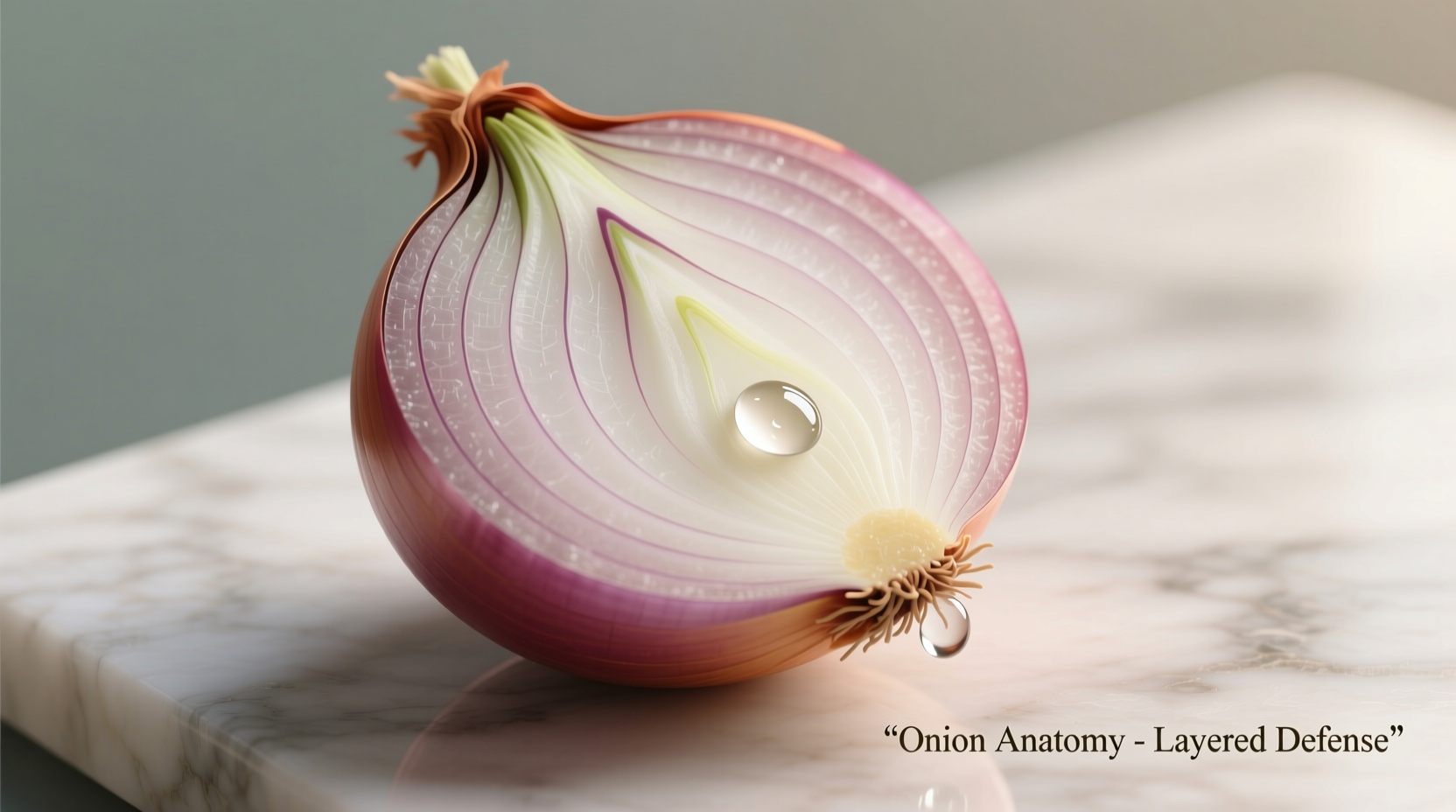Have you ever wondered why onions sit in the vegetable section but don't quite match your mental image of what a vegetable should be? You're not alone. This confusion stems from the critical distinction between botanical science and culinary tradition—a gap this article bridges with clear explanations, authoritative sources, and practical insights you can use immediately in your cooking and gardening.
Botanical Reality: Why Onions Aren't Fruits
From a strict botanical perspective, fruits develop from the fertilized ovary of a flowering plant and contain seeds. Apples, tomatoes, and cucumbers all fit this definition—they form after pollination and house seeds within their structure.
Onions, however, develop from a modified underground stem called a bulb. The edible part consists of layered leaf bases that store nutrients for the plant. No seed production occurs in the bulb itself—seeds develop in the flower head that appears if the plant bolts. This fundamental biological difference places onions firmly in the vegetable category according to scientific classification.
| Classification Type | Fruit Characteristics | Vegetable Characteristics |
|---|---|---|
| Botanical Definition | Develops from flower ovary, contains seeds | Edible plant parts excluding seed-bearing structures |
| Onion's Structure | ❌ No seeds in bulb, doesn't develop from ovary | ✅ Bulb formed from modified stem and leaf tissue |
| USDA Classification | N/A | ✅ Listed under All Vegetables |
Culinary Context: Why the Confusion Persists
The persistent question "is an onion a fruit or vegetable" arises because culinary usage often contradicts botanical accuracy. In cooking:
- Chefs classify ingredients by flavor profile and usage rather than scientific taxonomy
- Vegetables typically provide savory, earthy, or aromatic elements to dishes
- Fruits generally contribute sweetness and are used in desserts or sweet applications
Onions clearly belong in the savory category—they're foundational to mirepoix, sofrito, and other flavor bases worldwide. The USDA Agricultural Research Service consistently categorizes onions with vegetables in nutritional databases, reinforcing their culinary classification.

Historical Classification Timeline
Understanding how onions have been classified throughout history reveals why confusion exists today:
- Pre-18th century: Plants categorized by usage (medicinal, culinary) without scientific taxonomy
- 1753: Carl Linnaeus establishes modern botanical classification system, defining fruits by seed-bearing structures
- 19th century: Culinary traditions solidify onions as vegetables in cookbooks worldwide
- 1983: USDA formally includes onions in Vegetables and Vegetable Products category in food composition databases
- Present: Ongoing public confusion due to inconsistent science education and viral misinformation
Practical Implications for Home Cooks and Gardeners
Knowing the correct classification matters more than you might think:
For Cooking
Understanding onions as vegetables explains their behavior in recipes:
- They caramelize rather than macerate like fruits
- They form the savory foundation for sauces and soups
- They don't pair well with sweet applications (unlike culinary fruits)
For Gardening
Proper classification affects cultivation practices:
- Onions require different crop rotation than fruiting plants
- They have distinct nutrient requirements compared to fruit-bearing plants
- Understanding their bulb structure helps with proper harvesting and storage
Common Misconceptions Debunked
Several persistent myths contribute to the "is an onion a fruit or vegetable" confusion:
- Myth: "If it grows underground, it's a root vegetable"
Truth: Onions are bulb vegetables (modified stem), not root vegetables like carrots or potatoes - Myth: "Tomatoes are vegetables, so onions might be too"
Truth: Tomatoes are botanically fruits but culinarily vegetables—onions are vegetables both ways - Myth: "The sweet varieties must be fruits"
Truth: Sweetness doesn't determine classification (consider sweet bell peppers)
When Classification Matters Most
While the fruit vs. vegetable debate seems academic, correct classification has real-world implications:
- Nutritional planning: Onions provide different nutrients than fruits (higher sulfur compounds, lower sugars)
- Dietary restrictions: Some fruit-restricted diets still allow onions
- Gardening success: Proper crop rotation requires understanding plant families
- Food safety: Different preservation methods apply to vegetables vs. fruits
Frequently Asked Questions
Is an onion technically a fruit in any classification system?
No, onions are never classified as fruits in any legitimate botanical or culinary system. While tomatoes and cucumbers are botanically fruits but culinarily vegetables, onions are vegetables in both contexts because they develop from stem tissue rather than seed-bearing flower structures.
Why do some people think onions might be fruits?
This confusion typically stems from misunderstanding botanical definitions. People often equate "fruit" with "sweet" and "vegetable" with "savory," but botanical classification depends on plant structure, not taste. Since some onions can be sweet, this leads to incorrect assumptions about their classification.
How does the USDA classify onions in nutritional databases?
The USDA consistently classifies onions under vegetables in all nutritional databases and food composition resources. In the FoodData Central database, onions appear in the "Vegetables and Vegetable Products" category (FDC ID: 170267), with detailed nutritional information reflecting their vegetable classification.
Are there any vegetables that are actually fruits?
Yes, several plants commonly considered vegetables are botanically fruits because they develop from flower ovaries and contain seeds. These include tomatoes, cucumbers, zucchini, eggplants, and bell peppers. Onions don't fall into this category—they're vegetables both botanically and culinarily.











 浙公网安备
33010002000092号
浙公网安备
33010002000092号 浙B2-20120091-4
浙B2-20120091-4